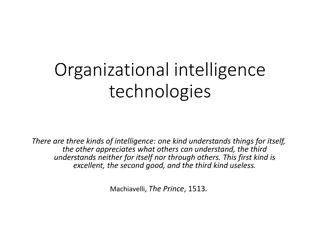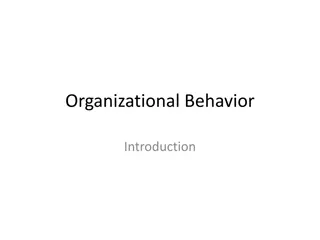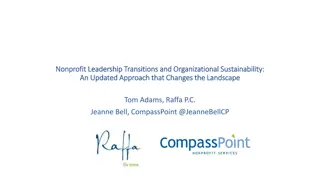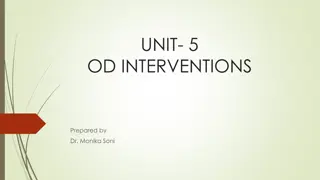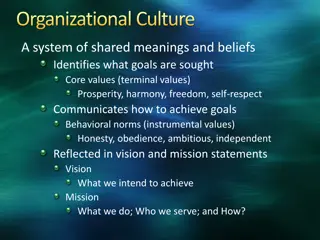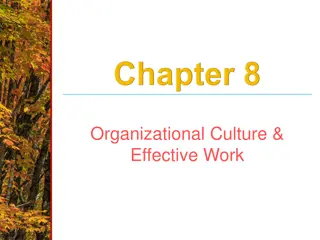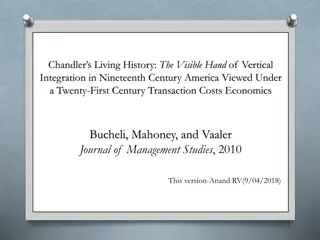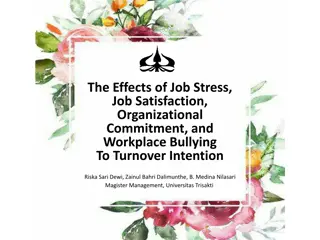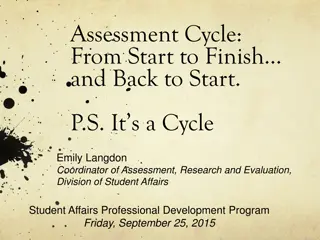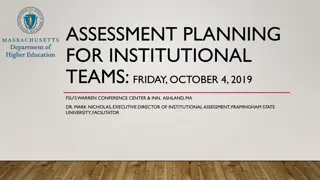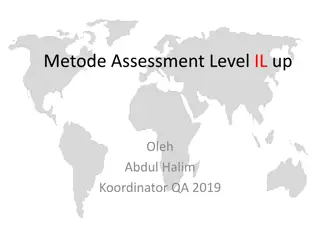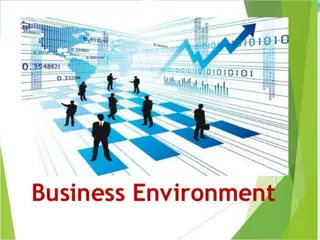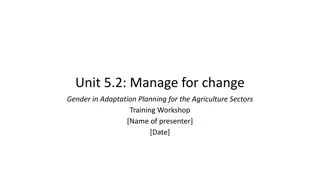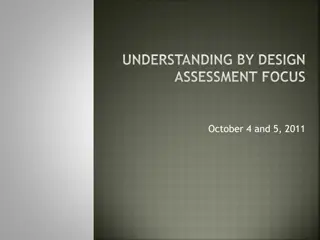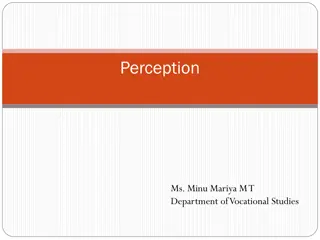Understanding Organizational Environment Assessment
Developing a shared understanding of an organization's environment is crucial for success. The Nine Steps to Success Framework outlines the assessment process, including conducting a Balanced Scorecard Assessment, reviewing strategic elements, and analyzing internal and external factors. By evaluating culture, capabilities, strategic components, and environmental trends, organizations can gain valuable insights to inform decision-making and drive strategic action.
Download Presentation

Please find below an Image/Link to download the presentation.
The content on the website is provided AS IS for your information and personal use only. It may not be sold, licensed, or shared on other websites without obtaining consent from the author. Download presentation by click this link. If you encounter any issues during the download, it is possible that the publisher has removed the file from their server.
E N D
Presentation Transcript
Step 1: Assessment Developing a Shared Understanding of the Organization s Environment
The Nine Steps to Success Framework The Nine Steps to Success Framework
Step One: Assessment Step One: Assessment Learning Objectives Understand how to conduct a Balanced Scorecard (BSC) Assessment Develop and validate Mission, Vision, Core Values, Stakeholders Organization Enablers and Pains Customers Identified, and and
Assessment Means Assessment Means Understanding the Understanding the Organization s Organization s Environment Environment
Review Existing High Level Strategic Elements Conduct an Environmental Scan Step One Step One Tasks: Tasks: Develop or Revalidate High Level Strategic Elements
Task 1: Review Task 1: Review Existing High Level Existing High Level Strategic Elements Strategic Elements
Review & Review & Critique Existing Critique Existing Components Components
Culture and performance Capability for strategic thinking and action Internal stakeholder groups and their positions Core competencies and strengths, as well as weaknesses Communication thereof) Employees capabilities and capacities The The internal internal analysis analysis focuses on: focuses on: clarity (or lack
The political, economic, regulatory and demographic trends and forces Trends and organization s particular industry and market Customers and identities and needs macro view, including The The external external analysis analysis focuses on: focuses on: forces in the stakeholders
Task 2: Conduct Task 2: Conduct an Environmental an Environmental Scan Scan
Summarize SWOT and Summarize SWOT and Other Strategic Other Strategic Assumptions as Assumptions as Enablers & Challenges Enablers & Challenges
Task 3: Develop or Revalidate High Task 3: Develop or Revalidate High- -level Strategic Elements Characteristics Of Good Mission, Vision & Core Elements Characteristics Of Good Mission, Vision & Core Values Values level Strategic Vision Vision Describes where we want our Describes where we want our organization to be in 3 organization to be in 3 - -10 years, our picture of the future years, our picture of the future Our Vision is to become Our Vision is to become (achieve) (achieve) Brief, easy to understand and Brief, easy to understand and communicate message, usually communicate message, usually one sentence one sentence Vision statement should be Vision statement should be emotionally inspiring emotionally inspiring Mission Mission Who we are, what we are about, Who we are, what we are about, or our purpose or our purpose Our Mission is to provide (serve) is to provide (serve) A few sentences in length A few sentences in length no more than one paragraph more than one paragraph Often incorporates features of Often incorporates features of our organization (e.g., products our organization (e.g., products or services, markets or or services, markets or community served, functions community served, functions performed, uniqueness) performed, uniqueness) Core Values Core Values Describes what we stand for in Describes what we stand for in the context of the organization s the context of the organization s mission. Defines our code of mission. Defines our code of conduct, expected behavior conduct, expected behavior Provides ethical guidelines for Provides ethical guidelines for decision decision- -making and daily making and daily conduct (e.g., hiring, promoting, conduct (e.g., hiring, promoting, relationship building) relationship building) 10 Our Mission no
How to Develop a Shared Understanding of an Organizations Mission How to Develop a Shared Understanding of an Organization s Mission and Vision and Vision
What to avoid during Assessment Step What to avoid during Assessment Step Not taking time to fully understand who the customer is Using weasel words-words that aren t specific-too much industry jargon or vague sentiments that have no defined meaning Deploying too many lists and too little analysis (SWOT Analysis) Ignoring previous planning and assessment efforts. Too much wordsmithing on mission and vision statements Not fully engaging employees and external stakeholders in assessment Not being transparent
An Overarching Strategic Result (Goal, Target or Strategic Destination) An Overarching Strategic Result (Goal, Target or Strategic Destination) Can Make a Vision Statement Measurable Can Make a Vision Statement Measurable
Thank You Thank You Questions


